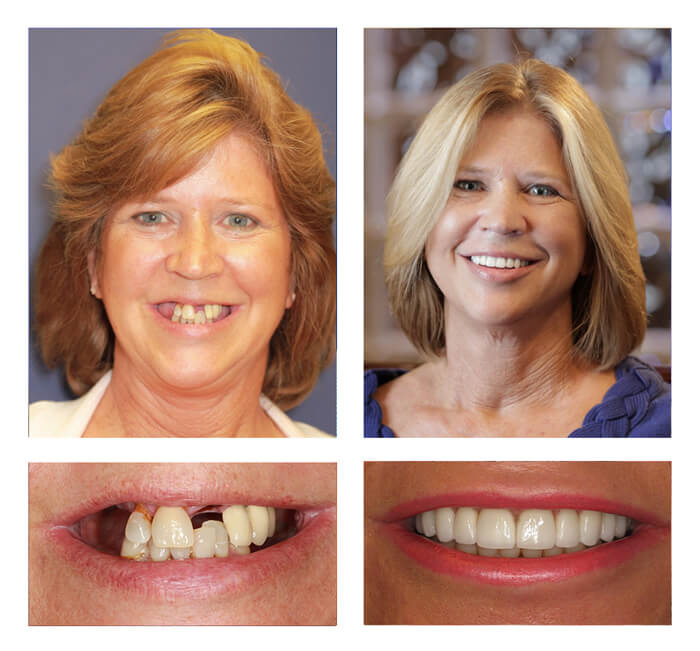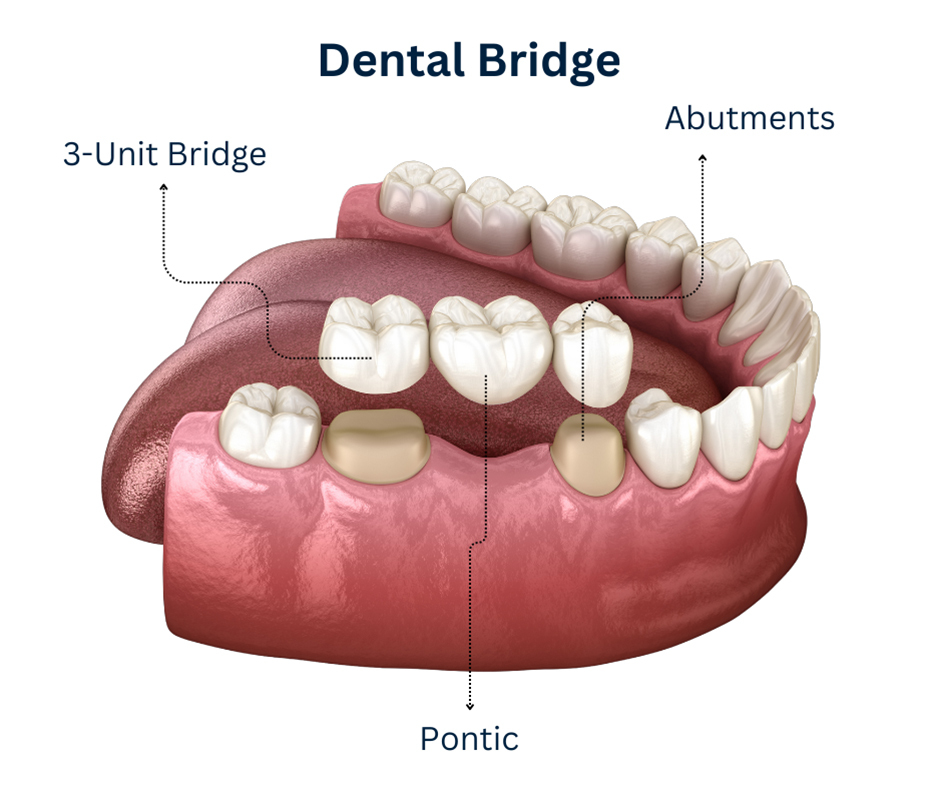Discover How Dental Bridges Can Transform Your Smile and Oral Health

At Vero Dental Spa in Vero Beach, FL, dental bridges are expertly crafted prosthetic devices designed to replace one or more missing teeth by bridging the gap between adjacent teeth. Missing teeth affect more than just your smile; they impact chewing, speech, and overall oral health. Without timely replacement, adjacent teeth can shift, leading to bite problems and increased risk of decay and gum disease.
At Vero Dental Spa, we focus on restoring your smile’s function and beauty with personalized care. To schedule your consultation and start exploring our comprehensive dental services, contact our Vero Beach dentist today by calling (772) 778-5550.
What Our Dental Patients Are Saying
Our dental practice has helped countless patients love their smiles again:
- “Going to the dentist to me is one of the worst things in life that I must do. After going to Vero Beach Dental Spa and being treated like Royalty I will return. I needed 4 crowns, an extraction and the beginnings of a bridge. Never felt a THING. Awesome People work there.” – Kathleen R.
- “Not one to post a review, but after using many dentists over the past decades, I have to say Vero Dental is the best! They explained why a procedure should be done & how they are to accomplish it. I would explain how my last dentist did the same procedure & they said, we do it differently because we need to wait a few extra weeks so all the swelling goes down before we place your permanent bridge in. Over the course of a few weeks, they made two temporary bridges checking my area where the new bridge was to go making sure everything looked good before placing the permanent bridge in!! Very pleased with the final result!!!” – Richard W.
What Are Dental Bridges?
A dental bridge is a custom-made prosthetic that replaces missing teeth by anchoring artificial teeth (pontics) to crowns fitted over adjacent natural teeth (abutment teeth). Our skilled dentists ensure the bridge is securely cemented, restoring your smile’s function and appearance.
This solution preserves your oral health by maintaining proper bite alignment and preventing the facial sagging that can result from missing teeth. Bridges also help you chew and speak comfortably while enhancing your natural beauty.
Different Types of Dental Bridges
Not all dental bridges are the same. Depending on your dental health, budget, and aesthetic preferences, your dentist may recommend one of the following types of bridges. Please also keep in mind, we do not offer all the treatments listed below. Contact our dental office for more information.Traditional Dental Bridges
The most common type, traditional dental bridges, consists of one or more pontics held in place by dental crowns cemented onto the abutment teeth. These bridges are ideal when you have healthy, natural teeth on either side of the gap.
- Best for: Patients with strong, healthy adjacent teeth.
- Advantages: Highly durable, natural appearance, and widely available.
- Considerations: Requires reshaping of adjacent teeth to accommodate crowns.
Implant-Supported Bridges
For patients missing multiple teeth or lacking strong adjacent teeth, implant-supported bridges are anchored to dental implants surgically placed in the jawbone. These bridges offer superior stability and longevity.
- Best for: Multiple missing teeth or weak adjacent teeth.
- Advantages: Extremely stable, prevents bone loss, and mimics natural tooth roots.
- Considerations: Higher cost and longer treatment time due to implant surgery.
Cantilever Bridges
Cantilever dental bridges are similar to traditional bridges but are supported by a crown on only one side of the gap. This makes them suitable when there’s only one healthy tooth adjacent to the missing tooth.
- Best for: Cases with a single adjacent healthy tooth.
- Advantages: Less invasive than traditional bridges since only one tooth is crowned.
- Considerations: Less stable than traditional bridges, not ideal for back teeth where chewing forces are stronger.
Maryland Bridges
Also known as resin-bonded bridges, Maryland bridges use a metal or porcelain framework bonded to the back of adjacent teeth, eliminating the need for crowns. They’re a conservative option that preserves more of your natural tooth structure.
- Best for: Front teeth or cases where minimal tooth alteration is desired.
- Advantages: Less invasive, quicker procedure, and cost-effective.
- Considerations: Less durable than traditional bridges, not suitable for heavy chewing.
We do not offer Maryland dental bridges at our Vero Beach dental office. Contact our dentist near you today at (772) 778-5550 to learn more.
Your Step-by-Step Guide to Getting a Dental Bridge at Vero Dental Spa
Step 1: Personalized Consultation and Treatment Planning
Our experienced dentist in Vero Beach will evaluate your oral health, discuss bridge options, and create a treatment plan that fits your goals and budget.
Step 2: Tooth Preparation and Precise Impressions
Adjacent teeth are shaped to fit crowns, and precise impressions are taken to craft your custom bridge. Local anesthesia is used to ensure your comfort.
Step 3: Temporary Bridge Placement for Protection and Comfort
A temporary bridge protects your teeth while your permanent restoration is fabricated in our trusted dental laboratory.
Step 4: Final Bridge Placement and Perfecting Your Smile
We carefully fit and cement your permanent bridge, making any necessary adjustments to ensure optimal comfort and function.
Dental Bridge Benefits

Patients can experience the following dental bridge benefits:
- Restored smile
- Improved functionality
- Maintains facial structure
- Prevents further dental complications
- Long-lasting restoration
- Affordable solution
- Boost in confidence
- Minimally-invasive procedure
How Much Do Dental Bridges Cost?

While the costs of your dental bridge will vary based on several factors, you can expect to spend between $2,000 and $5,000. Factors that will influence the total cost include:
- Geographical location
- Materials used
- The type of dental bridge
- Number of teeth that need to be replaced
- A dentist’s expertise and experience
- Dental insurance plan
- Additional procedures
Are you ready to schedule a consultation? Contact our dentist in Vero Beach at (772) 778-5550 today. We offer comprehensive dental services to ensure you get the dental care you need.
Caring for Your Dental Bridge

To ensure your dental bridge lasts as long as possible, proper care is essential. Follow these tips to keep your bridge in top condition:
- Practice Good Oral Hygiene: Brush twice daily with a soft-bristle toothbrush and fluoride toothpaste. Floss daily, using floss threaders or interdental brushes to clean under the bridge.
- Avoid Hard Foods: Chewing on hard or sticky foods (like ice or caramel) can damage your bridge. Stick to a bridge-friendly diet.
- Visit Our Vero Beach Dentist Regularly: Schedule checkups and cleanings every six months to monitor your bridge and overall oral health.
- Quit Smoking: Smoking can stain your bridge and increase the risk of gum disease, which can compromise the bridge’s stability.
- Use a Nightguard if Needed: If you grind your teeth at night, a nightguard can protect your bridge from excessive wear.
Frequently Asked Questions
How long do dental bridges last?
With proper care and regular dental visits, dental bridges can last between 10 to 20 years or even longer.
Is getting a dental bridge painful?
The procedure involves local anesthesia to minimize discomfort. Some sensitivity after placement is normal but usually temporary.
Are dental bridges covered by insurance?
Many dental insurance plans cover a portion of the cost for dental bridges. Check with your provider for specific coverage details.
How many visits are required for a dental bridge?
Typically, 2 to 3 visits over several weeks are needed for consultation, preparation, and final placement of a custom dental bridge.
Ready to Restore Your Smile? Take the Next Steps with Vero Dental Spa
Dental bridges at Vero Dental Spa offer a reliable, natural-looking solution to tooth loss, restoring your smile’s function and appearance. With personalized care and treatment, your bridge can last 10 to 20 years or longer.
To get started:
- Schedule a consultation with our skilled dentist in Vero Beach to discuss your dental bridge options. Call (772) 778-5550.
- Explore treatment plans tailored to your oral health and lifestyle.
- Review insurance and financing options to make your care affordable.
Related Services: We also provide dental implants, dentures, and preventive care to support your comprehensive oral health needs. We welcome new patients.

Get Your Complimentary
Consultation or 2nd Opinion
- Exam
- Full mouth X-ray
- Private Consultation with Doctor ($350 value)
- 3036 20th St,
Vero Beach, FL 32960 - (772) 778-5550
Working hours
- Monday: 8am - 5pm
- Tuesday: 8am - 5pm
- Wednesday: 8am - 5pm
- Thursday: 8am - 5pm
- Friday: 8am - 1pm
- Saturday & Sunday: Closed
